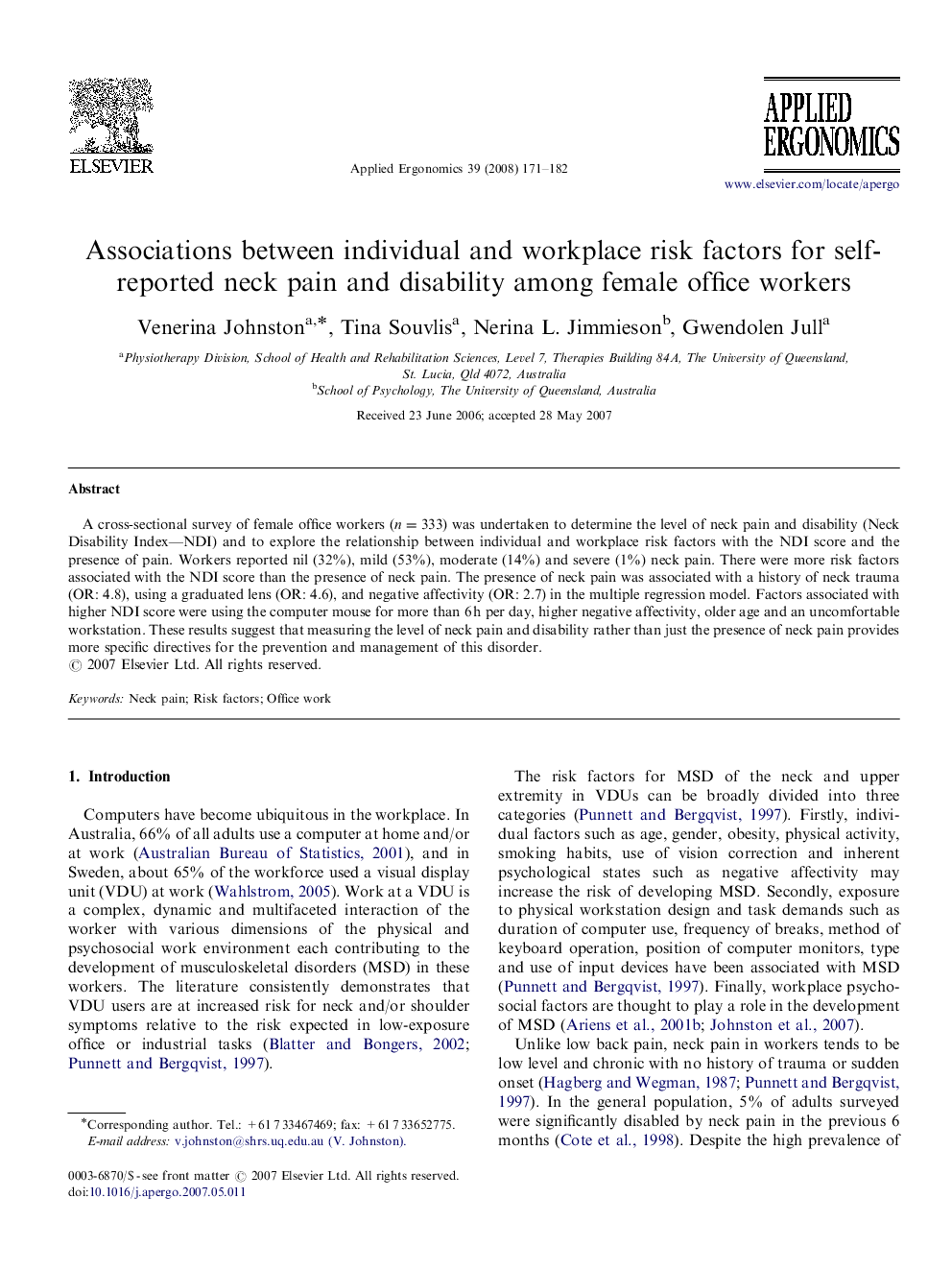| Article ID | Journal | Published Year | Pages | File Type |
|---|---|---|---|---|
| 551374 | Applied Ergonomics | 2008 | 12 Pages |
A cross-sectional survey of female office workers (n=333) was undertaken to determine the level of neck pain and disability (Neck Disability Index—NDI) and to explore the relationship between individual and workplace risk factors with the NDI score and the presence of pain. Workers reported nil (32%), mild (53%), moderate (14%) and severe (1%) neck pain. There were more risk factors associated with the NDI score than the presence of neck pain. The presence of neck pain was associated with a history of neck trauma (OR: 4.8), using a graduated lens (OR: 4.6), and negative affectivity (OR: 2.7) in the multiple regression model. Factors associated with higher NDI score were using the computer mouse for more than 6 h per day, higher negative affectivity, older age and an uncomfortable workstation. These results suggest that measuring the level of neck pain and disability rather than just the presence of neck pain provides more specific directives for the prevention and management of this disorder.
